Death
The Hobo Jungle Murder
You might or might not be surprised at the number of hits one gets when searching for "hobo murder." I guess that milieu was a really violent one. In any case, I highlight this instance for the great hobo names. I assume "Knubbs" meant "nubs," referring to the dead man's lack of hands.What would your own hobo name be, by the way?

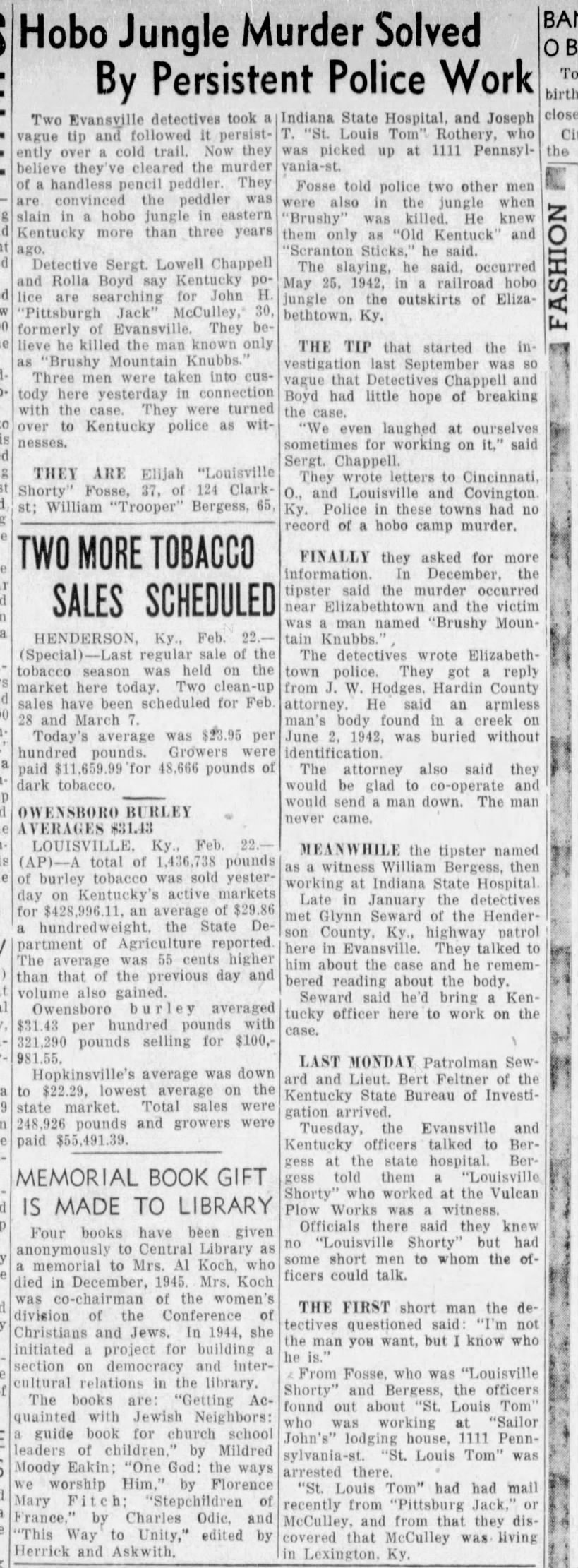
Posted By: Paul - Tue Sep 26, 2023 -
Comments (0)
Category: Bums, Hobos, Tramps, Beggars, Panhandlers and Other Streetpeople, Death, Odd Names, Police and Other Law Enforcement, 1940s
Dirt Danger Days

Posted By: Paul - Mon Sep 18, 2023 -
Comments (0)
Category: Death, Hygiene, Advertising, Children, 1950s
Follies of the Madmen #575
Who knew a simple cough could prove fatal?
Posted By: Paul - Sat Sep 16, 2023 -
Comments (1)
Category: Death, Advertising, 1960s, Diseases
Death by parmesan
Giacomo Chiapparini recently died when a shelf broke in a warehouse, causing thousands of wheels of "a Parmesan-style cheese" to fall down on top of him. The collapse reportedly sounded "like thunder." It took 12 hours to find his body.More info: BBC News
Posted By: Alex - Sun Sep 03, 2023 -
Comments (1)
Category: Death
Red Hill Jr.‘s Niagara Falls Plunge
Once a common trope, the voluntary plunge over Niagara Falls seems to be extinct. This list at Wikipedia records the last such try as occurring in 2017. Would authorities even allow such an attempt these days?Wikipedia entry for Hill Senior and Junior.
Posted By: Paul - Tue Aug 29, 2023 -
Comments (1)
Category: Daredevils, Stuntpeople and Thrillseekers, Death, Lakes, Ponds, Rivers, Streams, Swamps and Other Bodies of Fresh Water, North America, Twentieth Century
Liquid Cremation
Aquagreen Dispositions LLC is one of the few companies that offers body disposal by alkaline hydrolysis. This involves using a highly alkaline solution to break down a corpse into its chemical components. The company argues it's an eco-friendly alternative to cremation. It refers to it as flameless or liquid cremation.On its website, the company states that after the process is complete the remains "are returned to the family in the same manner as with flame cremation, however, the cremated remains are lighter in color because it is clean and without carbon discoloration."
What it doesn't mention is that this is only the skeletal remains, which have been ground up into a powder. The rest of the chemical soup gets flushed into the sewer system — and this is why the process remains controversial. From wikipedia:
More info: cbc.ca
Posted By: Alex - Sat Aug 19, 2023 -
Comments (3)
Category: Death
Unlikely Reasons for Murder No. 16
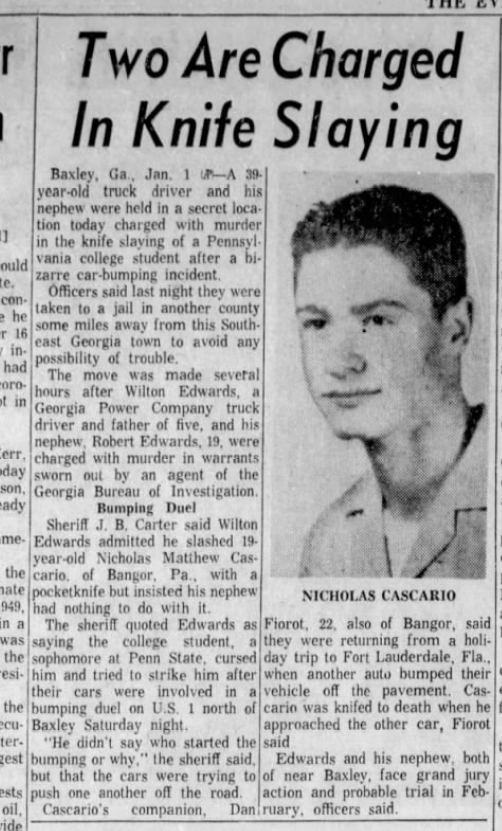
Source: The Evening Sun (Baltimore, Maryland) 01 Jan 1963, Tue Page 4
Posted By: Paul - Sat Aug 12, 2023 -
Comments (1)
Category: Death, 1960s, Cars
Waiting for her husband
Another entry in our ongoing exploration of people killed unexpectedly by falling objects.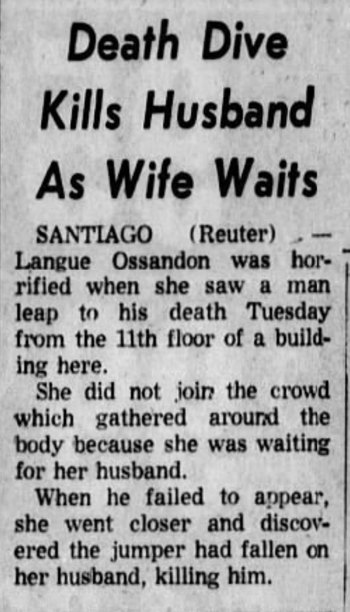
Victoria Times Colonist - Jan 21, 1976
Posted By: Alex - Tue Aug 01, 2023 -
Comments (0)
Category: Death, 1970s
Flying Manhole Cover
Continuing our recent theme of random airborne objects that kill or injure people: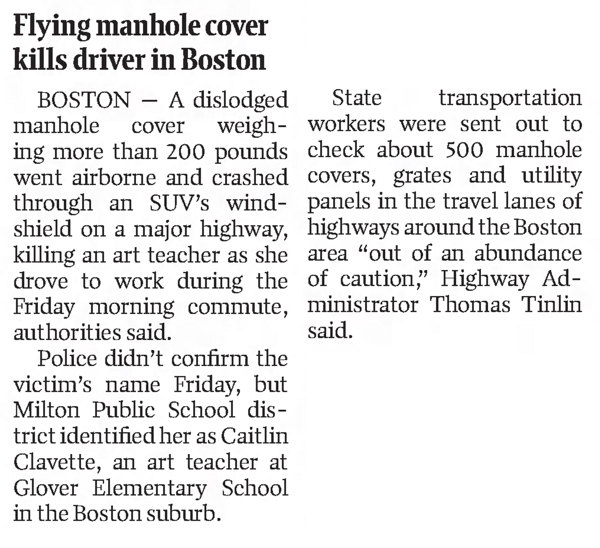
Arizona Daily Star - Feb 13, 2016
Posted By: Alex - Fri Jul 14, 2023 -
Comments (0)
Category: Death, 2010s
Unlikely Reasons for Murder No. 15
Source: Chicago Tribune (Chicago, Illinois) 17 Feb 1949, Thu Page 21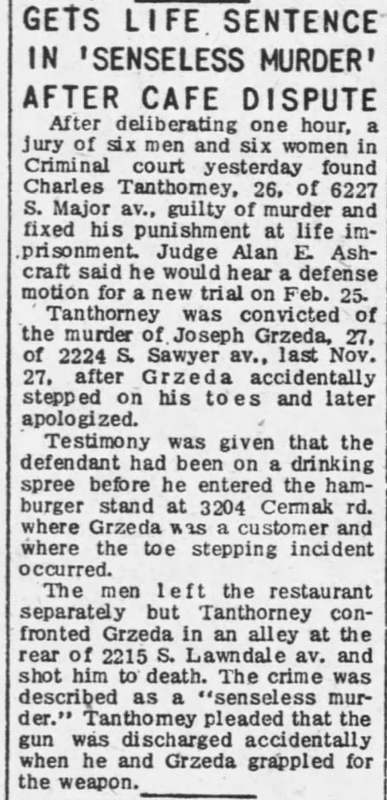
Posted By: Paul - Thu Jul 13, 2023 -
Comments (3)
Category: Death, Food, Scary Criminals, Stupid Criminals, 1940s, Alcohol

| Who We Are |
|---|
| Alex Boese Alex is the creator and curator of the Museum of Hoaxes. He's also the author of various weird, non-fiction, science-themed books such as Elephants on Acid and Psychedelic Apes. Paul Di Filippo Paul has been paid to put weird ideas into fictional form for over thirty years, in his career as a noted science fiction writer. He has recently begun blogging on many curious topics with three fellow writers at The Inferior 4+1. Contact Us |




